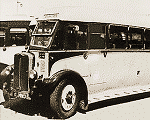Long Distance
Coaches
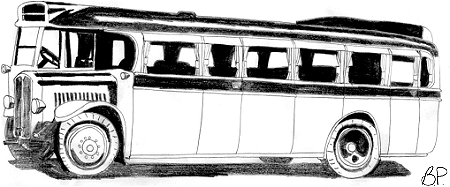
A 'Commodore'coach.

|
1927 was the worst financial year for
A.J.S. since its formation. The company failed to declare a
dividend to its shareholders, for the first time in its
existence.
The depression had caused a reduction in the sale of
motorcycles and sidecars, not helped by the appearance of
the attractively priced, mass-produced light car. The
wireless department also suffered from a reduction in sales
because of increased competition, with the introduction of
cheaper mass-produced radios.
One piece of good news came in the form of a lucrative
contract to build car bodies for the largest local car
manufacturer, Clyno. In the summer of 1927 Clyno developed
the model 'Nine' light car. Charles Haywood secured the
contract for A.J.S. to build the bodies at Lower Walsall
Street works. The A.J.S. Board thought that diversification
might be a way of securing the company’s long term future,
after being faced with falling sales. It would also secure
the future of the 1,300 or so staff at Lower Walsall Street.
The Board members decided to develop a
range of commercial vehicle chassis at Lower Walsall Street,
under Charles Hayward’s supervision. As a result the ailing
wireless department moved from Lower Walsall Street to
Stewart Street Works to free-up space required for building
the car bodies, and for developing commercial vehicles.
|
| Read about Lower Walsall
Street Works |
 |
Development work on the commercial
vehicle chassis began in the autumn of 1927. Luckily A.J.S.
managed to obtain the services of two people who had gained
considerable experience in the manufacture and sales of
commercial vehicles at the Star Engineering Company Limited,
which was also suffering from declining sales. They were
Edward Toghill, who became chief designer, and Edward Jenner
who became sales manager. |
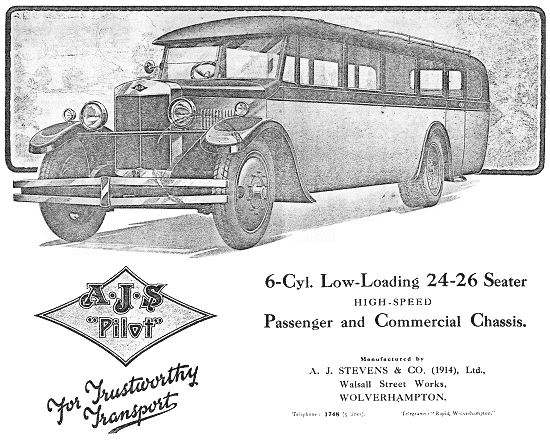
The 'Pilot', the first A.J.S. chassis. From an
A.J.S. catalogue.
|
The development team soon built a
prototype, and tested it in the Wolverhampton area. After
satisfactory tests it was fitted with a temporary Hayward
body, and driven to Blackpool for a weekend, with A.J.S.
staff as passengers. Again everything went well, and work
began on a production version.
Around this time Charles Hayward moved
to London to exploit his idea of financing new inventions
and processes. He formed the successful Electric & General
Industrial Trusts Limited, which led to the formation of the
Firth Cleveland Group of Companies. His position at Lower
Walsall Street Works was taken over by Joe Stevens junior.
The first A.J.S. commercial vehicle
chassis, called the ‘Pilot’ was launched in February 1929
during a very difficult period for the company. On 11th
February Clyno went into receivership, and the lucrative
contract with A.J.S. for the production of car bodies came
to a premature end. The contract had been essential to the
future of production at Lower Walsall Street because of the
continuing decline in the sidecar market. It ensured
full-time working for the large number of staff, and funded
the project to develop A.J.S. commercial vehicles. To try
and offset this important loss, A.J.S. decided to
manufacture a light car, the A.J.S. ‘Nine’.
|
|
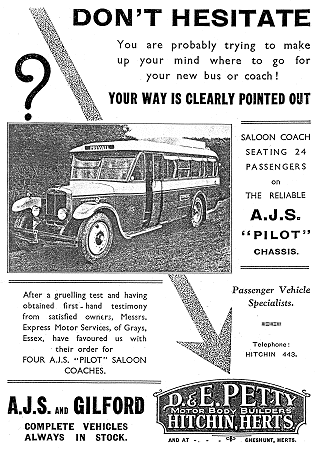
An advert from September 1930. |
The ‘Pilot’ chassis was intended for
use as a 20 seater high speed, long distance coach,
or as a 26 seater single decker bus. The chassis consisted of engine,
wheels, axles and all associated parts, and would be sold to
coach and bus operating companies, who would have a suitable
body made and fitted to the chassis.
D. & E. Petty of
Hitchin, Hertfordshire were appointed as agents. They had a body building
section and so could also supply complete coaches.
The chassis was powered by a 25hp. 6
cylinder, Meadows 6ERC overhead valve engine, with an
integral 4 speed gearbox. The main frames were made by John
Thompson Motor Pressings Limited at Bilston, and consisted
of 8inch deep channel sections, which were 24ft long and 3ft
3½inches apart at the rear, sloping inwards towards the
front.
Two layouts were available. In the
normal layout the driver sat behind the engine, whereas in
the forward control layout the driver sat in a separate cab
alongside the engine. The normal chassis sold for £685, and
the forward control chassis sold for £705.
|
|
Initially sales were good, due to
interest from small independent coach operators, but this
only lasted for a short while because of increased
competition from several manufacturers including Dennis,
Morris, and Bedford.
The improved 'Pilot' was launched in
1930 in response to the 1930 Road Traffic Act, which
included new guidelines on the minimum space between seats.
In order to comply with the new act the chassis had to be
extended by three inches.
A number of ‘Improved Pilot’
chassis were supplied for light goods use as lorries,
furniture vans, or horse boxes etc.
Around 140 ‘Pilot’
chassis were built.
|
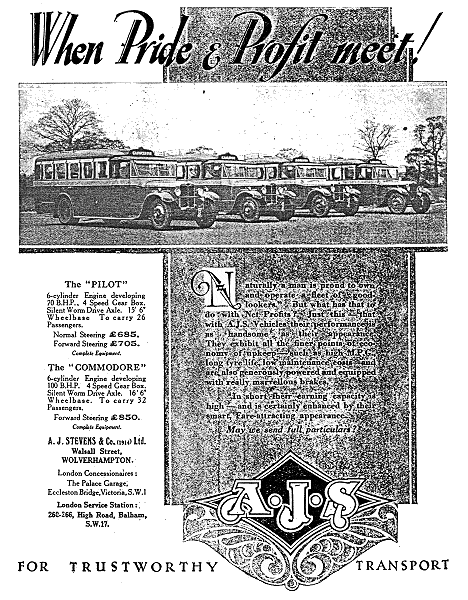
An advert from April, 1930.
|
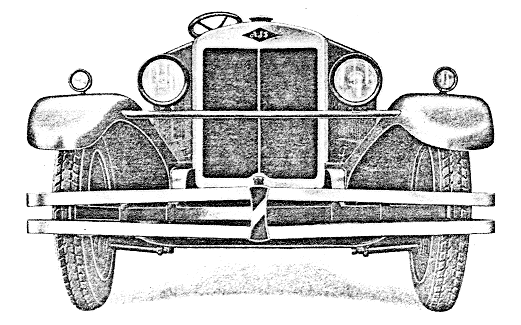 |
A front view of a 'Pilot'.
From an A.J.S. catalogue. |
| The 'Pilot' engine and gearbox
assembly. From an A.J.S.
catalogue. |
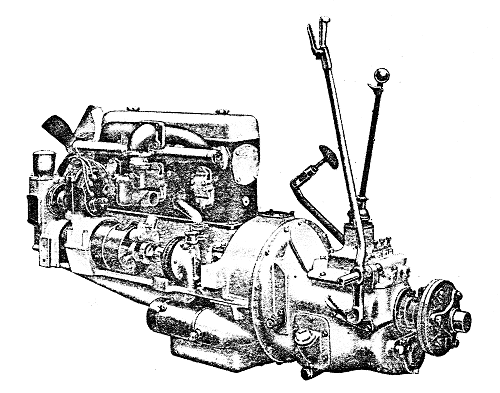 |
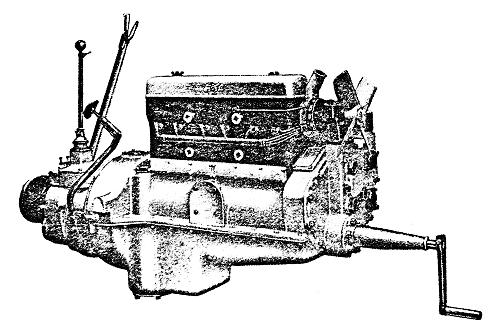 |
An offside view of a 'Pilot'
engine. From an A.J.S.
catalogue. |
| A 'Pilot' engine with forward
controls. From an A.J.S.
catalogue. |
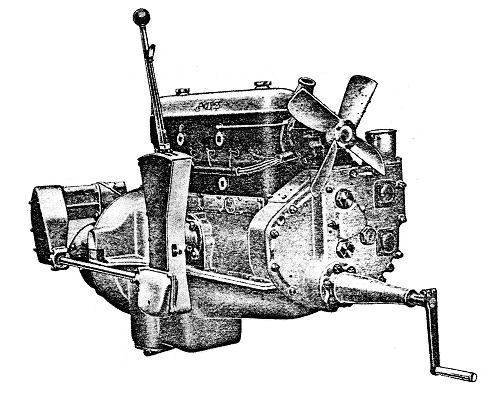 |
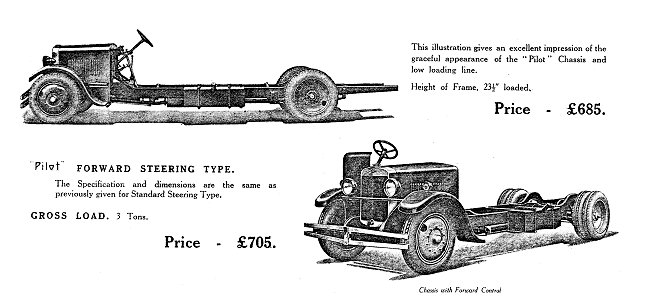
From an A.J.S. catalogue.
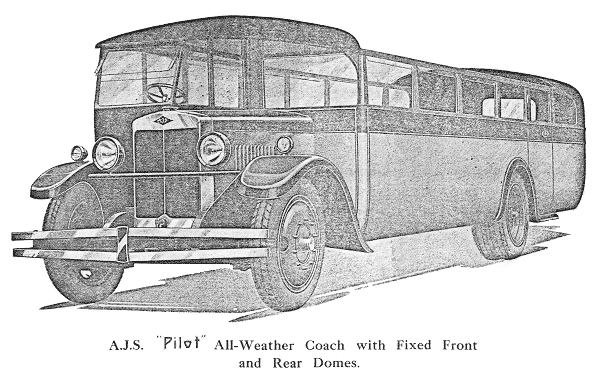
From an A.J.S. catalogue.
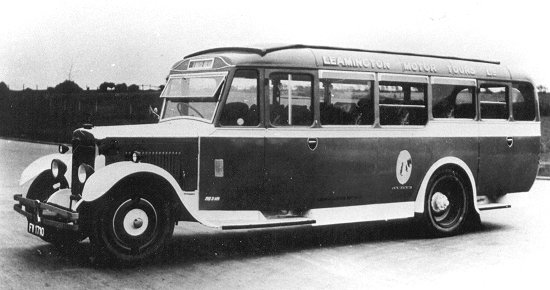 |
Another 'Pilot'.
Courtesy of the late Jim Boulton. |

A photograph from an A.J.S. advert showing some of the 'Pilots' that were owned by a company at St.
Anne's on Sea.
Courtesy of the late Geoff Stevens. |
|
The 1930 Road Traffic Act, passed in
August 1930, introduced regulation to bus and coach
operators in England and Wales, and greatly changed the
industry.
It limited the ability of the smaller operators to
extend their routes, which resulted in many of them being
taken over by larger companies.
This had a detrimental
effect on sales because all of the chassis built so far, had
been supplied to smaller operators, none of the larger
companies had shown any interest in A.J.S. products.
October 1929 saw the launch of the
'Commodore' chassis, intended for use as a 32 seater bus or
coach. The heavy duty chassis had a 10inch deep Thompson
chassis frame, and extra cross members to evenly distribute
the load.
The chassis was powered by a 6 cylinder, 36hp.
Coventry Climax L6, side-valve engine, with integral 4 speed
gearbox.
The selling price of £850 was far lower than the
equivalent competition.
A 'Commodore' was sold to Wolverhampton
Corporation and ran for seven years. Around 60 were built,
some being used as lorries.
|
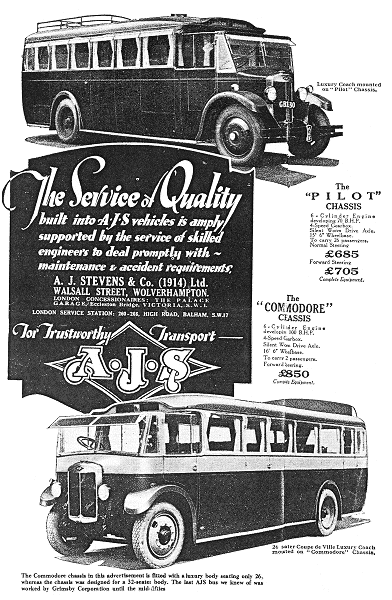 |
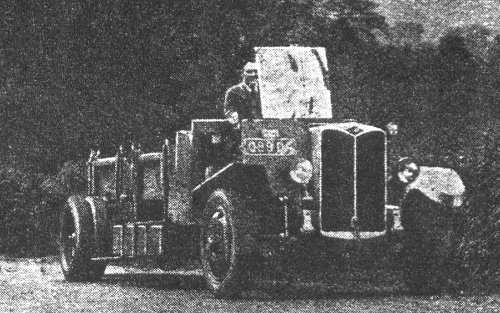 |
A prototype 'Commodore'
chassis undergoing a stop and start test on the Hermitage,
near Bridgnorth.
From 'The Commercial
Motor', 7th October, 1930. |
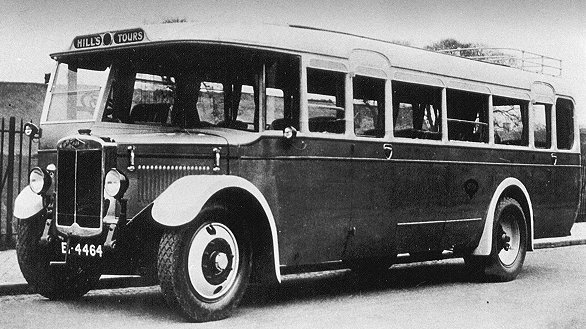
A 'Commodore' owned by Hills of West Bromwich.
Courtesy of the late Jim Boulton.
|
This photograph from an A.J.S. advert shows
another 'Commodore'.
Courtesy of the late Geoff Stevens.
|
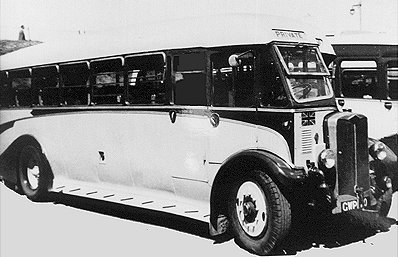 |
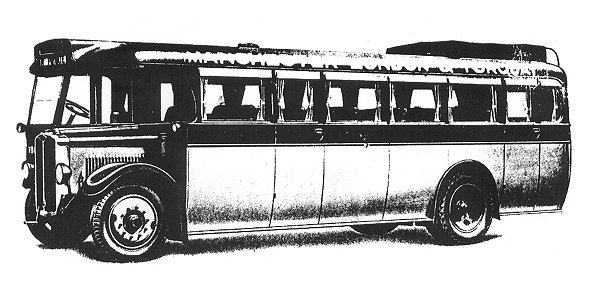
A long distance 'Commodore' coach. Courtesy of the
late Jim Boulton.
|
The last design, the 'Admiral' long
distance, high performance, 26 or 28 seat luxury coach
chassis, was launched in February 1931. It used the same
engine as the 'Commodore' and had a top speed of 55m.p.h.
The chassis sold for £795. Because of the recession and the
financial problems that beset A.J.S. only 8 were built.
Sadly A.J.S. went into liquidation in
October 1931, but considering that the chassis had only been
built over a period of two and a half years, with stiff
competition, a reasonable number were sold. The 'Admiral'
had not even been properly advertised as the sales
literature was not ready at the time of closure.
Unfortunately, as far as is known, not one of the coaches or
buses has survived.
Charles Aaron Weight purchased the
remaining chassis spares valued at £40,000, for just £250,
and moved them to his factory at Chillington Fields. Sales
far exceeded the cost, and what few items were left (mostly
rear axles), were given to assist the Government with its
call for scrap metal for the war effort in 1939. The parts
included 4 complete ‘Commodore’ chassis which were later
sold and built into complete coaches. |
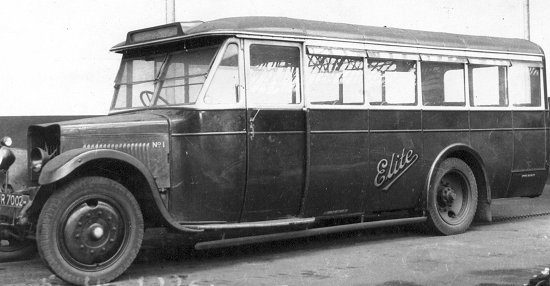
An old 'Pilot' awaiting its fait. Courtesy of the
late Jim Boulton.
|

|
|
Return to the list
of
manufacturers |
|
